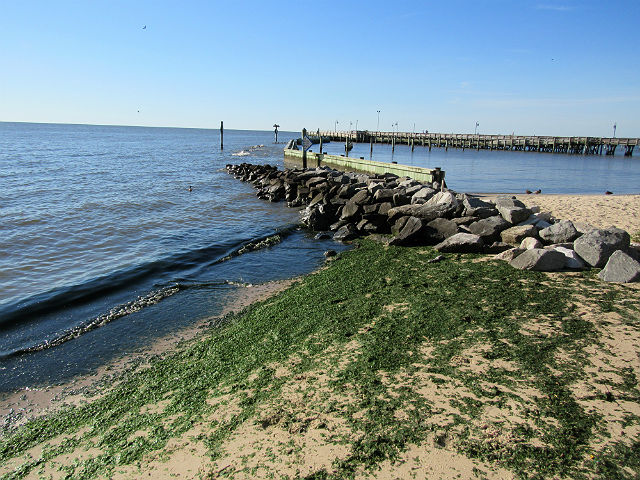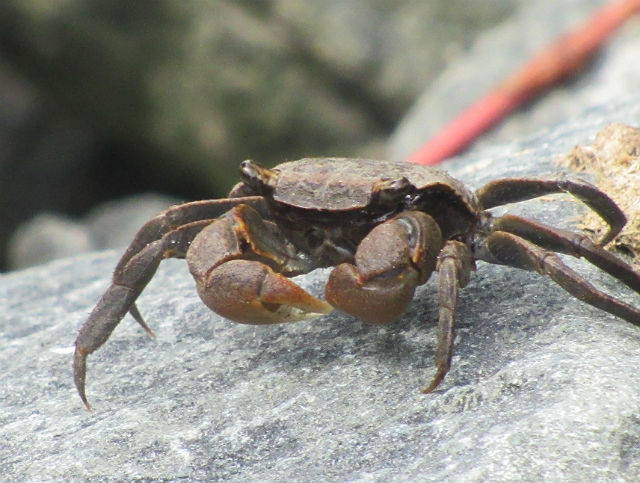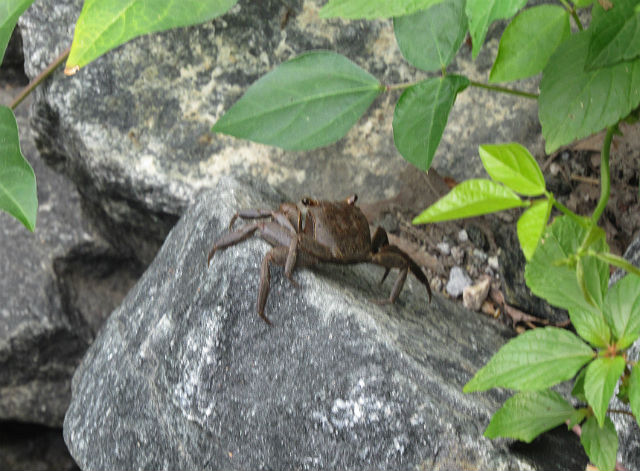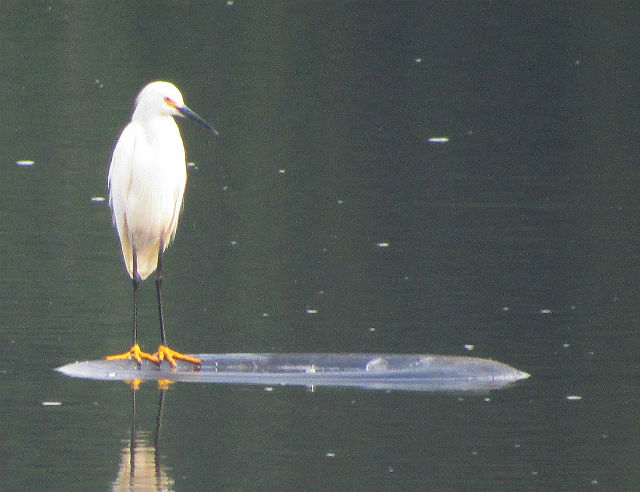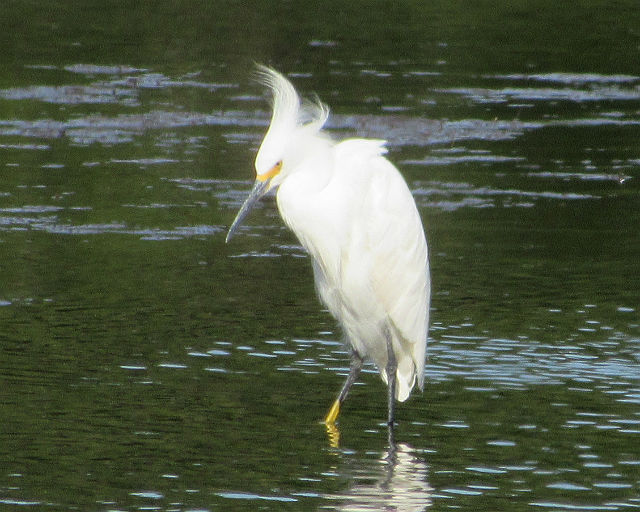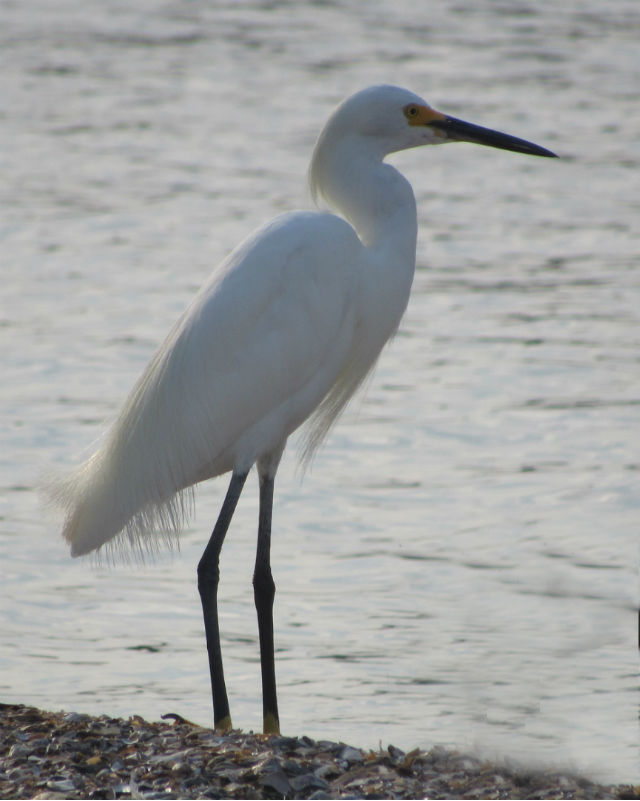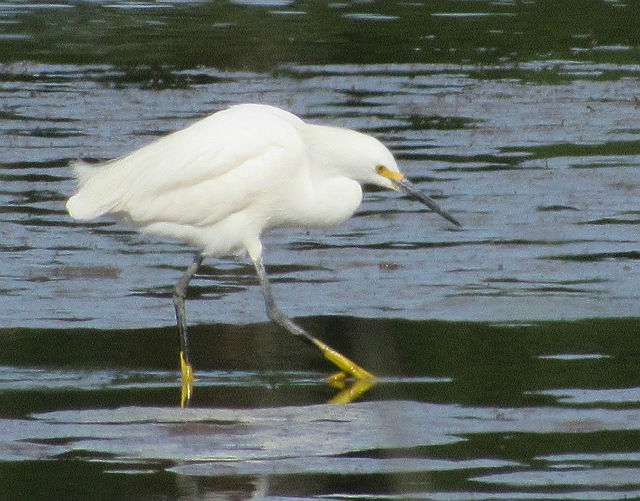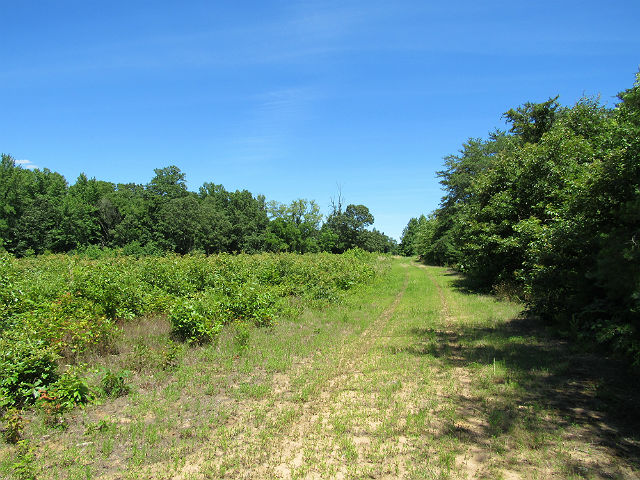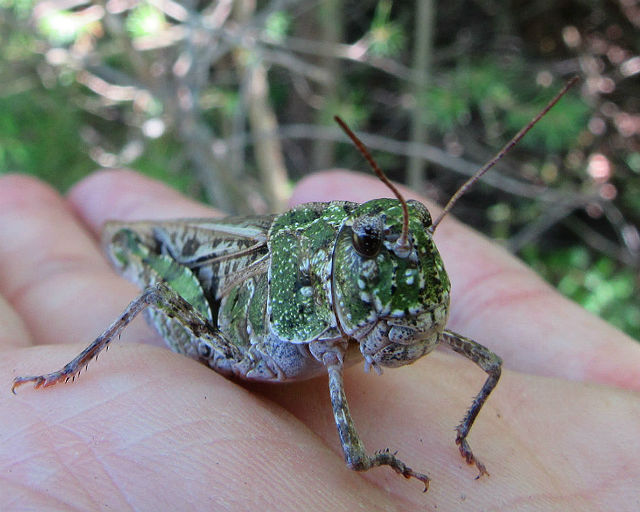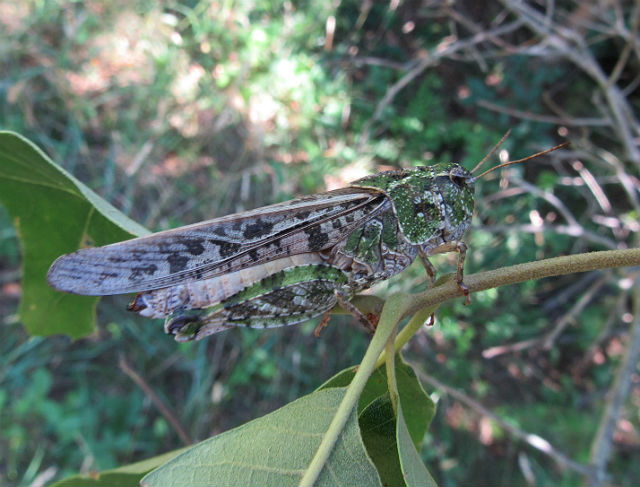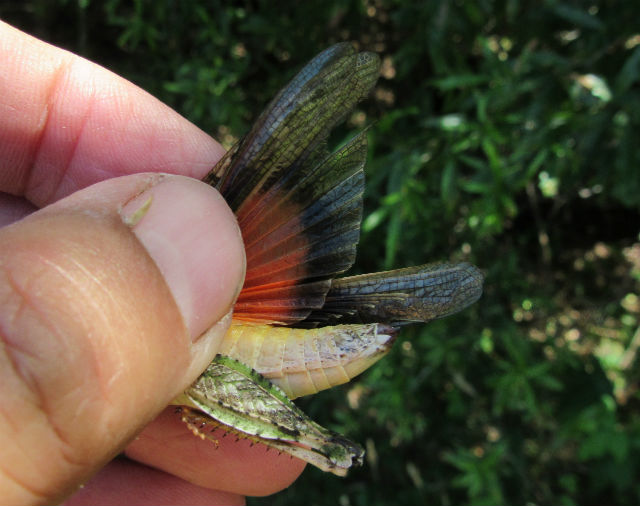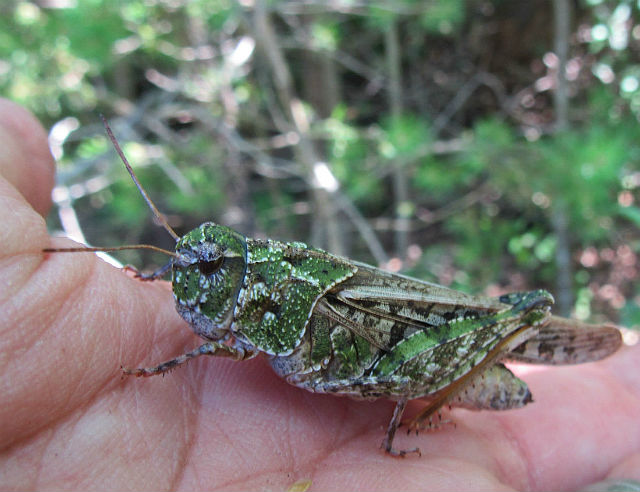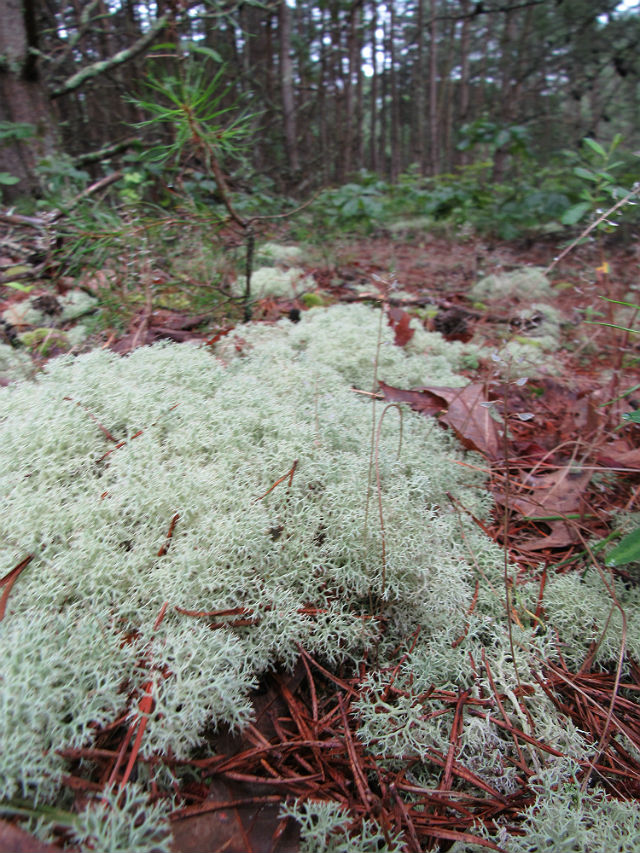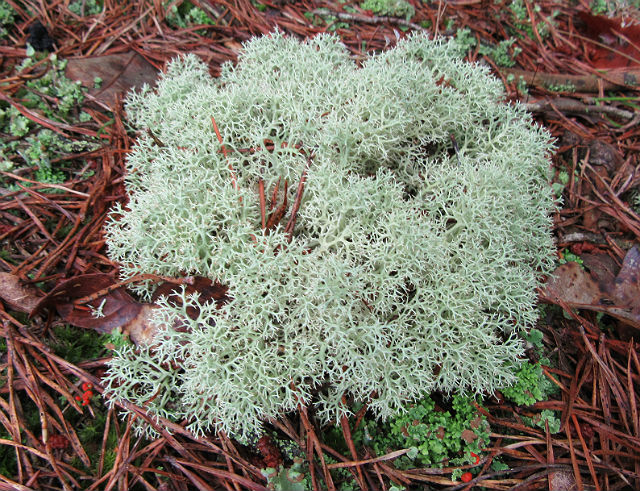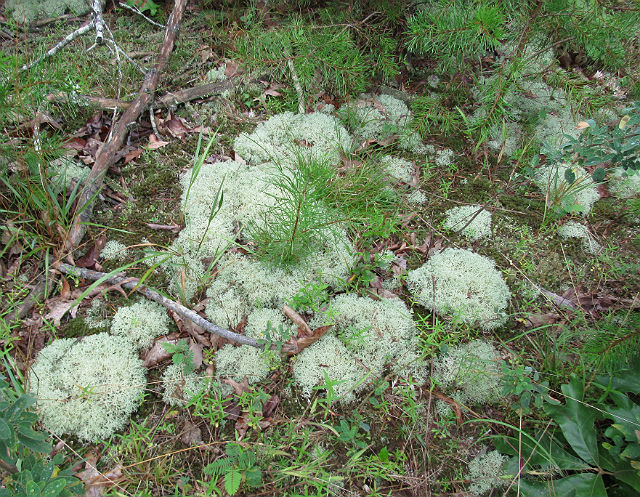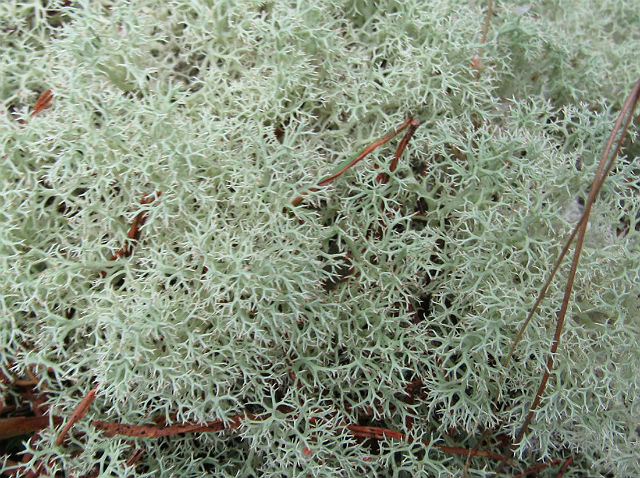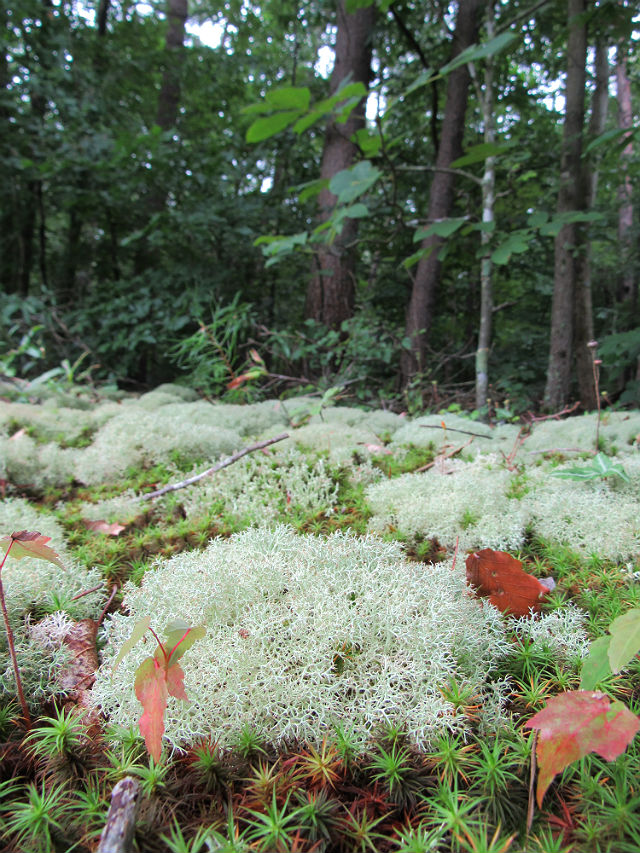While staying at North Beach, Maryland, I would often see these crustaceans in rock piles that bordered the brackish water shorelines. They were shy and would quickly retreat into their rock hideout if they felt they were being watched or approached.
The Marsh Crabs live communally within interconnected burrows in the mud. The tunnels may be 2 to 3 feet deep and often filled with water. Males are known for making “rapping” sounds when defending their burrows by striking two of their legs together.
Though I saw them in the daytime, they are mainly nocturnal. These invertebrates eat the outermost leaves of marsh plants, especially cordgrass.
Sometimes known as Squareback Marsh Crabs, these creatures live in a marine environment, but do not require seawater to survive, making them true terrestrial crabs.

